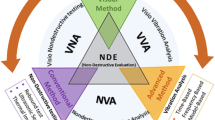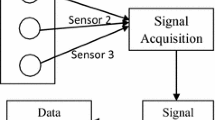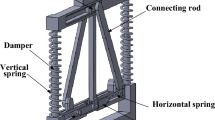Abstract
Swept-sine vibration test plays a significant role in product validations. As its basic step, the accuracy and efficiency of complex amplitude (which includes the amplitude and phase information of swept-sine signal) extraction have an important impact on the performance of swept-sine vibration test. In order to improve the efficiency while ensuring its accuracy, a swept-sine integration method is proposed. The proposed swept-sine integration method, which is inspired by tracking filter method and tracking integration method, utilizes a weighted integral process to extract the complex amplitude. A numeral example is presented to compare the performance of the proposed method with several other methods for complex amplitude extraction which are also reviewed in this paper. By comparing the results of the numerical example, some light is shed on the strength of the method proposed. Afterwards, the swept-sine integration method is applied in a real test, further validating the appliance value of this method.
Similar content being viewed by others
References
N. H. Chandra and A. S. Sekhar, Swept sine testing of rotor-bearing system for damping estimation, Journal of Sound and Vibration, 333(2), (2014) 604–621.
G. Gloth and M. Sinapius, Analysis of swept-sine runs during modal identification, Mechanical Systems & Signal Processing, 18(6), (2004) 1421–1441.
G. Gatti and M. J. Brennan, Inner detached frequency response curves: an experimental study, Journal of Sound & Vibration (2017) 246–254.
Q. Li et al., Model-based interpolation-iteration method for bearing coefficients identification of operating flexible rotor-bearing system, International Journal of Mechanical Sciences (2017) 471–479.
N. H. Chandra and A. Sekhar, Hilbert transform-based frequency response function estimation from run-up response of rotors, Proceedings of the Institution of Mechanical Engineers, Part C: Journal of Mechanical Engineering Science, 232(12), (2017) 2200–2210.
H. K. Jin, D. Byun and J. S. Han, An efficient numerical solution for frequency response function of micromechanical resonator arrays, Journal of Mechanical Science & Technology, 23(10), (2009) 2694–2702.
S. K. Mishra, G. Wrat, P. Ranjan and J. Das, PID controller with feed forward estimation used for fault tolerant control of hydraulic system, Journal of Mechanical Science and Technology, 32(8), (2018) 3849–3855.
M. A. Underwood and T. Keller, Recent system development for multi-actuator vibration control, Sound and Vibration, 35(10), (2001) 16–23.
A. G. Piersol, T. L. Paez and C. M. Harris, Harris’ Shock and Vibration Handbook, 6th Ed., McGraw-Hill, USA (2010).
M. P. Pelletier and M. A. Underwood, Multichannel simultaneous digital tracking filters for swept-sine vibration control, Journal of the IES, 5, (1994) 23–29.
S.-B. Wu and Q.-H. Lu, The integral digital tracking filter method and its application to dynamic balancing of rotors, Engineering Mechanics, 20(1), (2003) 76–79.
N. H. Chandra and A. S. Sekhar, Estimation of damping in rotors using complex morlet wavelet transform, Journal of Vibration & Control, 20(16), (2013) 2536–2551.
M. Feldman, Hilbert transform in vibration analysis, Mechanical Systems & Signal Processing, 25(3), (2011) 735–802.
N. E. Huang et al., The empirical mode decomposition and the Hilbert spectrum for nonlinear and non-stationary time series analysis, Proceedings of the Royal Society of London. Series A: Mathematical, Physical and Engineering Sciences, 454(1971), (1998) 903–995.
S. Muller, Transfer function measurement with sweeps, Journal of the Audio Engineering Society Audio Engineering Society, 49(6), (2001) 443–471.
B. Niu and Y. Xia, A FFT-based variety-sampling-rate sine-sweep vibration controller, Proceedings of International Conference on Neural Networks and Signal Processing, China, (2003) 1714–1718.
Acknowledgments
The study was performed in the State Key Laboratory of Mechanics and Control of Mechanical Structures. This project is funded by the Priority Academic Program Development of Jiangsu Higher Education Institutions, China.
Author information
Authors and Affiliations
Corresponding author
Additional information
Wei Zheng is a Ph.D. student at the Nanjing University of Aeronautics and Astronautics. His research interests include MIMO vibration control and inverse system.
Huaihai Chen is a Professor and Doctoral Supervisor at the Nanjing University of Aeronautics and Astronautics. His research interests include MIMO vibration control, modal identification and so on.
Rights and permissions
About this article
Cite this article
Zheng, W., Cui, X., Chen, H. et al. Swept-sine integration method for complex amplitude extraction of swept-sine signal. J Mech Sci Technol 34, 4981–4988 (2020). https://doi.org/10.1007/s12206-020-1103-6
Received:
Revised:
Accepted:
Published:
Issue Date:
DOI: https://doi.org/10.1007/s12206-020-1103-6




